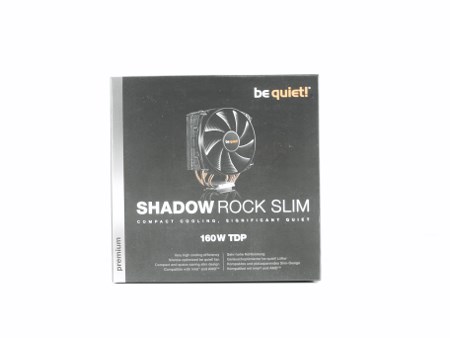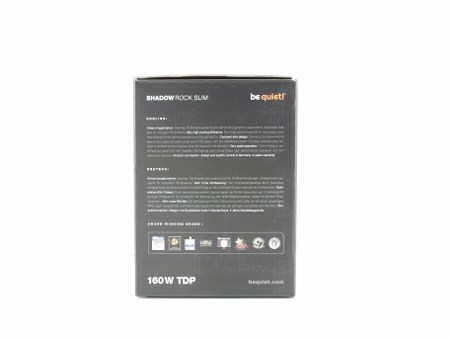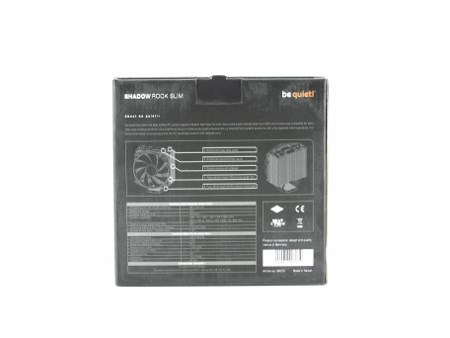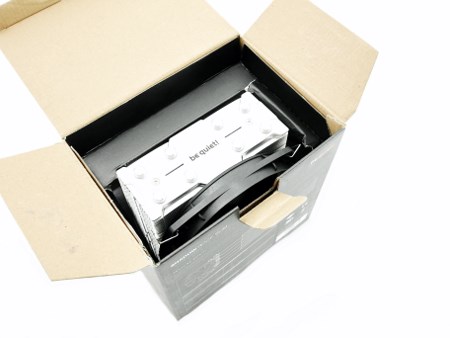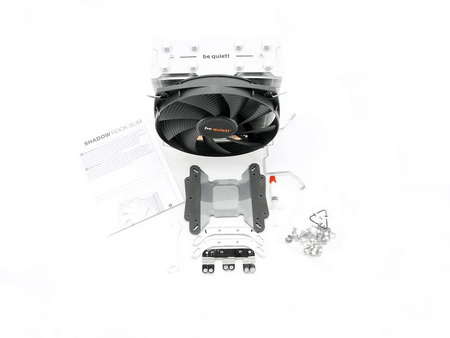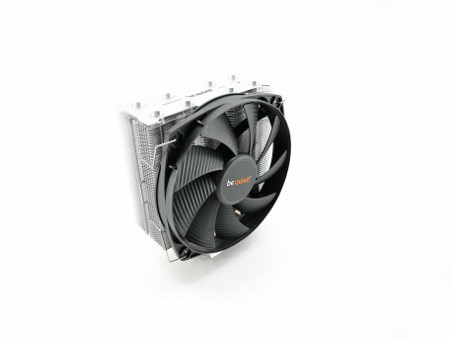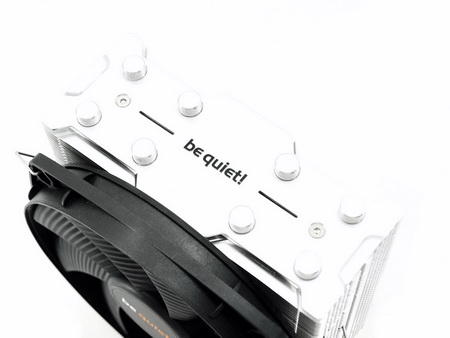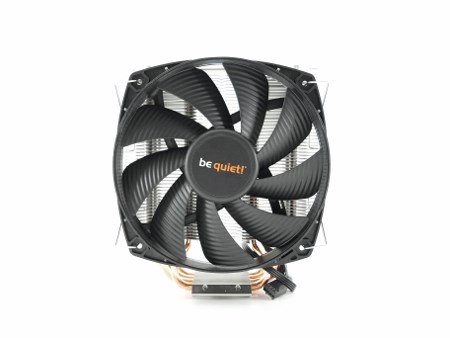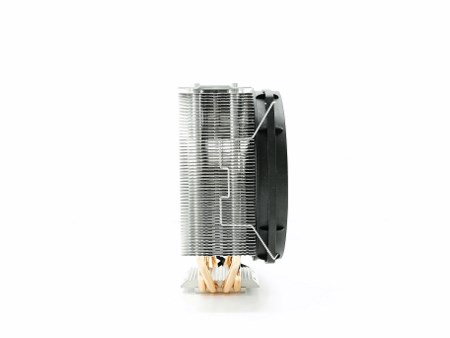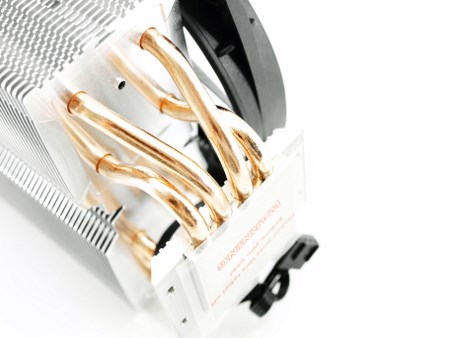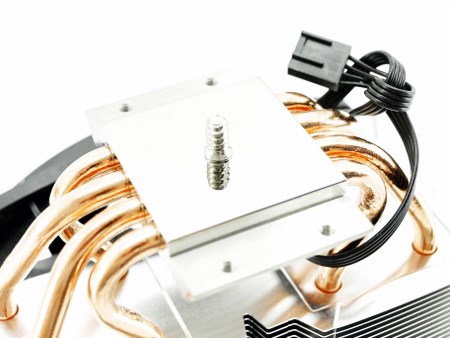INTRODUCTION
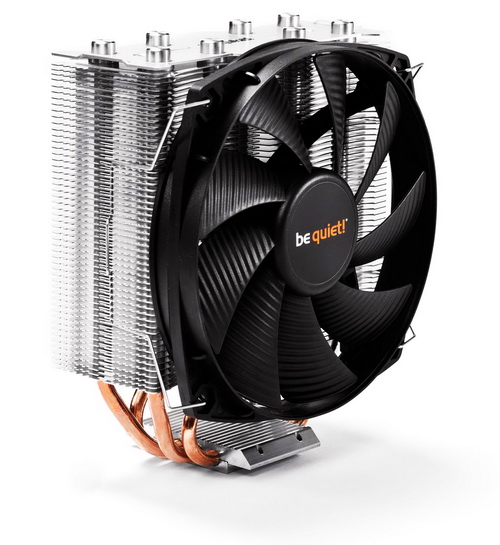
A few days back a good friend of mine decided to build a brand new system purely for HTPC use featuring one of the latest 4770k CPUs by Intel so when the time came for him to decide on a CPU Cooler we turned to me and the end result was him choosing the Antec Kuhler H2O 650 since he wanted good cooling with almost no noise at all (for that he has the fan switch to silent mode). That being said lately many of you out there have asked us to concentrate in doing more reviews about CPU Coolers and although there aren't that many new models in the market right now we will give it our best shot. Now since for the past 2 months or so we've been focusing in reviewing CPU Liquid Systems and high-end CPU Air Coolers we decided that in order to cover each and every single one of our readers our next few reviews should be about mid-end and HTPC low-profile CPU Coolers. The brand new Shadow Rock Slim by our friends at be quiet! is one such product and it has been on our test bench since Monday.
be quiet! is a premium brand manufacturer of power supplies and cooling solutions for your desktop PC. be quiet! products are convincing which is proved by reaching and defending the market leadership in PSU business in Germany for five consecutive years *. This is validated and accompanied by numerous awards for both power supplies and cooling solutions. be quiet! is awarded for five times in a row as manufacturer of the year in the power supply category by the readers of the well-known German hardware magazine PC Games Hardware. Another first and second rank in the categories “fans” and “cooler” underline the high acceptance of our products. be quiet! sticks to its name: Ten years’ experience in the field of noise reduction and silence make be quiet! products probably the most silent one on the market. Undoubted fans have a large impact of the noise levels of be quiet! products. Due we are using our specially developed Silent Wings fans in nearly all of our range. They are equipped with various noise reducing features. Thanks to these we ensure a really silent operation - our products reach the best balance between cooling performance and a virtually inaudible operation. If you choose be quiet! you can be sure to get premium quality and second to none silent operation from the quietness experts.
What will probably draw your attention most once you see the 160W TDP (Thermal Design Power) capable Shadow Rock Slim is neither its slim heatsink nor its design but rather the 135mm SilentWings fan be quiet! decided to equip it with which thanks to its very good performance should be able to balance things (size/performance). That being said the Shadow Rock Slim is not really a high performance CPU Cooler and be quiet! certainly doesn't claim otherwise (besides with just 160W TDP it wouldn’t be possible) since its advertised strong points are the no clearance issues with memory modules and the ability to install it inside compact PC cases. Still we are quite curious about how well such a small heatsink can perform and compare against similar solutions so let's find out.
SPECIFICATIONS AND FEATURES


PACKAGING AND CONTENTS
The front of the box has a medium sized product image, its main features and the be quiet! logo.
A few words about the product and its features are placed on the left side right above several award logos be quiet! has received by media around the world.
The specifications table is placed at the rear of the box beneath two drawings of the Shadow Rock Slim used to showcase its features.
be quiet! packs the Shadow Rock Slim and the rest of the bundle between several cardboard pieces.
Included in the bundle are the Shadow Rock Slim CPU Cooler, Allen key, thermal paste tube, 2 extra fan clips, backplate, installation manual and all the screws and brackets needed for installation with Intel LGA 775/1150/1155/1156/1366/2011 and AMD 754/939/940/AM2/AM2+/AM3/AM3+/FM1/FM2/FM2+ compatible mainboards.
THE SHADOW ROCK SLIM
The new Shadow Rock Slim is indeed slim so it's just 74mm thick, 137mm wide and 161mm tall and weighs 732g.
At the top be quiet! has placed a brushed aluminum plate with their logo on it that looks quite nice.
The 135mm SilentWings PWM fan spins up to 1400RPM and produces 67.8CFM of airflow with just 23.7dBA of noise.
The 52 aluminum fins are very close to each other (hardly 0.15mm away).
Four 6mm all-copper heatpipes leave the base and pass through all of the 52 aluminum fins.
be quiet! has given the base a nice mirror like finish with no machine markings.
TEST BED
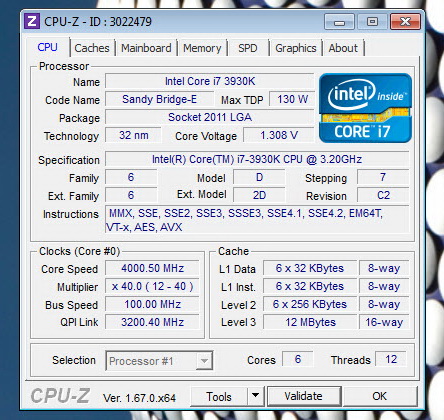

TESTING METHODOLOGY
We always take things quite seriously when it comes to work so just like with the previous LGA1366 database we will not be testing each CPU Cooler on its own and with different ambient temperature levels and thus we can actually have yet another valid CPU Cooler database. Testing a CPU Cooler automatically means that you need to know where it stands against the immediate competition and to accomplish that we have spent both money and time through the years, something that we plan to continue to do so in order to get the most accurate results for the end consumers who read these lines. Every CPU cooler in this database is tested with the bundled 140mm/120mm/92mm/80mm fans while working at both idle speed and 100% of their speeds for all the temperature tests. CPU Coolers that do not come bundled with a fan/s are measured using a Noctua fan (size dependent on the model) to test for the temperature tests but due to the lack of a stock fan dBA level tests are obviously skipped. Single (120/140mm) watercooling solutions are tested with the radiator mounted at the rear of our test rig while dual/triple/quad (240/260/280/360/420/480/560mm) solutions with the radiator mounted at the top. For the dBA tests every cooler in the database was measured both while on idle mode or with the fan controller in the minimum setting and while on extreme load or with the fan controller all the way to the highest possible setting (PWM fans do that on their own without our intervention). Every single test takes place in a temperature controlled room of 23 degrees Celsius Ambient Temp with the help of two AC units placed diagonally inside the room. The Arctic Silver 5 thermal paste is used with every CPU Cooler in our latest LGA2011 database (although initially this was not the plan we had to change things to get the most accurate results). Finally it's very important to point out that just because a CPU Cooler is better than another when tested with our test rig that does not necessarily mean that the same performance differences will apply 100% for other CPU models and in other situations (such as different ambient temps and system configurations).
To successfully record the load temperatures we use the latest OCCT application for around 6-10 minutes to push the processor to its limits and after that is done and the temperatures are recorded we wait for about 10-20 minutes for the CPU to cool down and record the idle temperatures. This is done to allow time for the thermal conductive material to achieve the optimal performance level. Same procedure is then repeated with the Passmark BurnIn Test as a failsafe just in case the OCCT results are wrong. This procedure takes a lot more time than the usual peltier/thermometer tests but this way not only can we deliver real world results to our readers based on real CPUs but we can also triple check the results using a variety of programs. Last but not least the temperatures were recorded using both the latest versions of AIDA64 and RealTemp while the noise level tests are performed using a high precision ExTech HD600 Decibel Meter placed about 10-15cm above the CPU Cooler. Still although the same testing procedure applies to all units do take into consideration that unlike the official numbers which are measured in special noise isolated labs with just the fans here we also have both the rest of the cooler and the rest of the system (although all system fans are turned off when recording noise levels).
TEST RESULTS


CONCLUSION
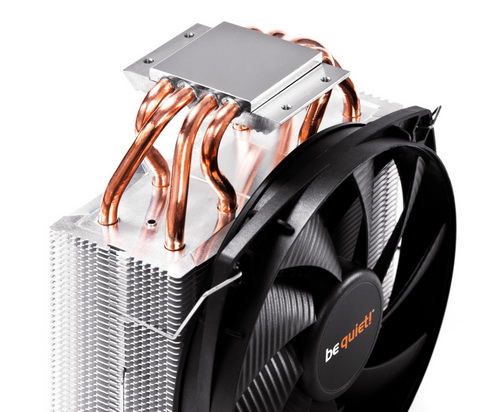
Testing the Shadow Rock Slim with our 3930k system didn't seem right at first but that changed right after we recorded the very first results. Of course even at the best possible scenario we never expected stellar performance levels from it due to its size but still it did manage to surpass two similarly sized models like the Raijintek Themis and the SilentiumPC Fera 2 HE1224 (even by a very small margin) without producing extra noise (in the case of the Themis it was much quieter). Be Quiet! is also right about the no clearance issues feature since the Shadow Rock Slim allowed full access to all 4 memory modules on the mainboard although i do think that's something every CPU Cooler out there should offer (that's not the case of course).
At the time of this review the brand new Shadow Rock Slim CPU Cooler by be quiet! retails for just 46Euros inside the EU (Amazon.co.uk) but unfortunately much like most of their products it's not currently available inside the USA. Certainly one can find many CPU Coolers at around the same price range (exceptions like the Fera 2 HE1224 are perhaps the best alternative due to their performance/price ratio) some of which will outperform the Shadow Rock Slim but not many of those offer zero clearance issues nor do they offer the low noise levels of the 135mm SilentWings fan so in the end it once again comes down to what you want. As for us thanks to its size, performance and noise levels we really recommend taking a closer look at the Shadow Rock Slim especially if you’re building an HTPC.
PROS
- Build Quality
- Good Performance
- Low Noise Levels
- Size
CONS
- Price (For Some)
- USA Availability
